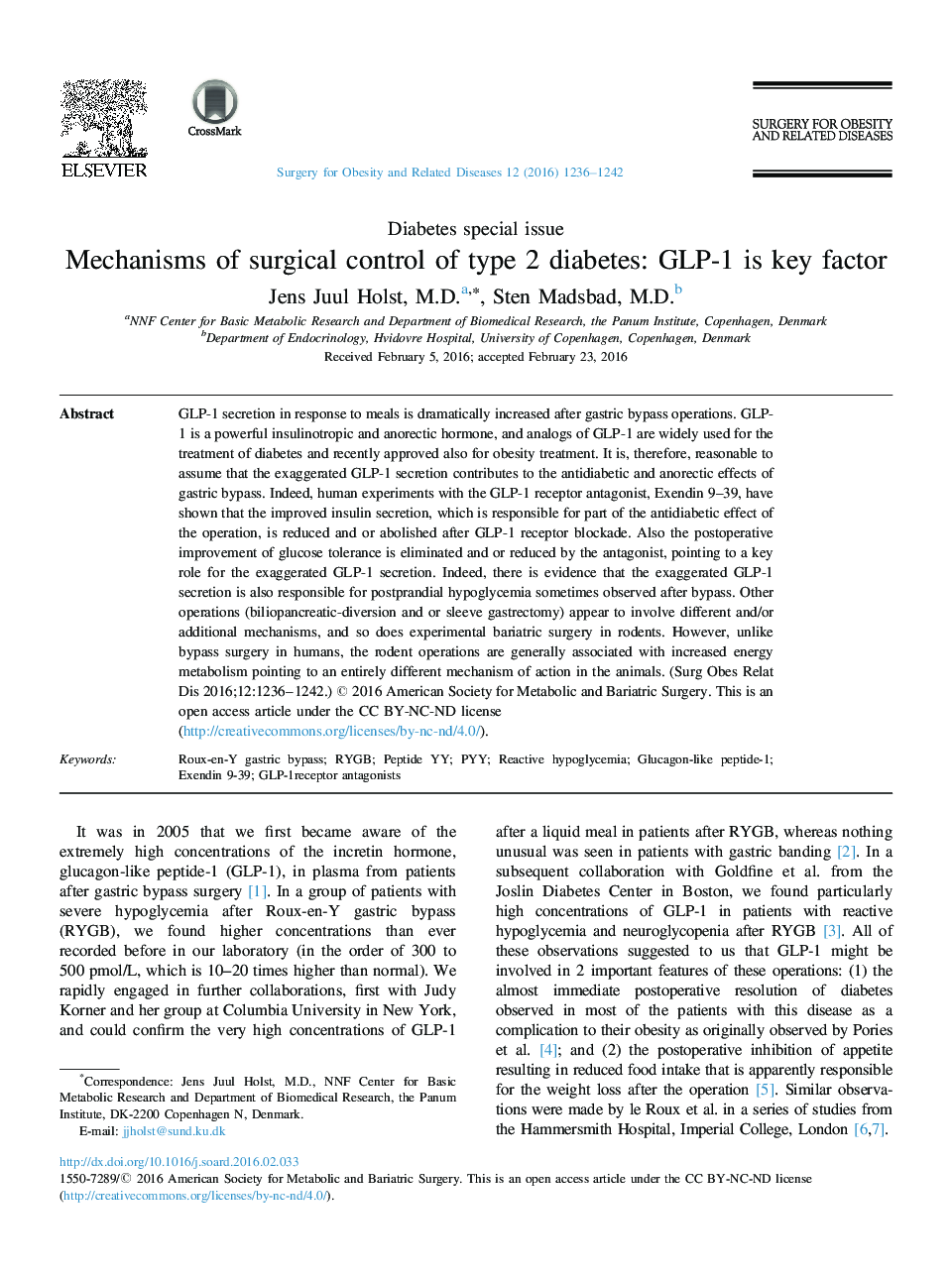| کد مقاله | کد نشریه | سال انتشار | مقاله انگلیسی | نسخه تمام متن |
|---|---|---|---|---|
| 5662226 | 1407552 | 2016 | 7 صفحه PDF | دانلود رایگان |

GLP-1 secretion in response to meals is dramatically increased after gastric bypass operations. GLP-1 is a powerful insulinotropic and anorectic hormone, and analogs of GLP-1 are widely used for the treatment of diabetes and recently approved also for obesity treatment. It is, therefore, reasonable to assume that the exaggerated GLP-1 secretion contributes to the antidiabetic and anorectic effects of gastric bypass. Indeed, human experiments with the GLP-1 receptor antagonist, Exendin 9-39, have shown that the improved insulin secretion, which is responsible for part of the antidiabetic effect of the operation, is reduced and or abolished after GLP-1 receptor blockade. Also the postoperative improvement of glucose tolerance is eliminated and or reduced by the antagonist, pointing to a key role for the exaggerated GLP-1 secretion. Indeed, there is evidence that the exaggerated GLP-1 secretion is also responsible for postprandial hypoglycemia sometimes observed after bypass. Other operations (biliopancreatic-diversion and or sleeve gastrectomy) appear to involve different and/or additional mechanisms, and so does experimental bariatric surgery in rodents. However, unlike bypass surgery in humans, the rodent operations are generally associated with increased energy metabolism pointing to an entirely different mechanism of action in the animals.
Journal: Surgery for Obesity and Related Diseases - Volume 12, Issue 6, July 2016, Pages 1236-1242